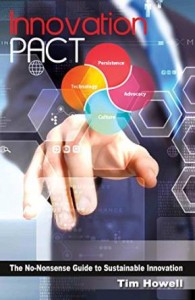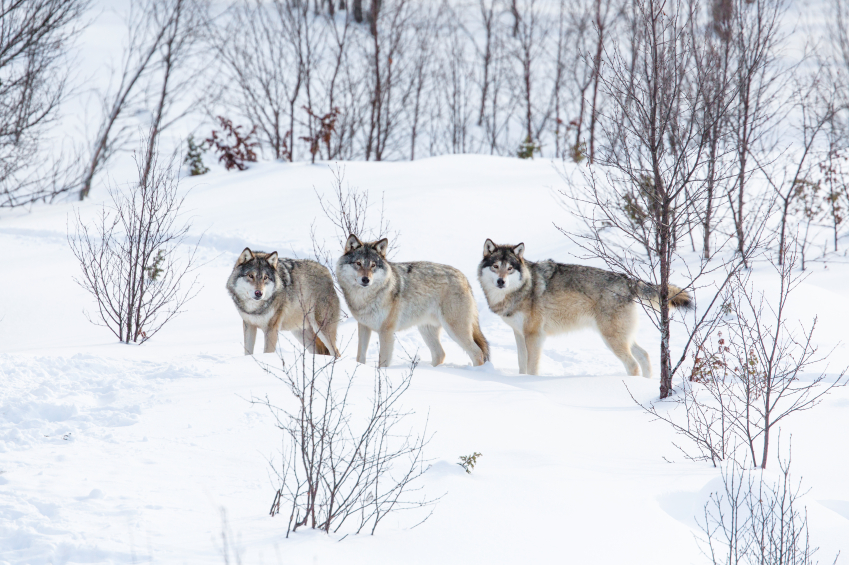Back in 2009, the movie the Hangover introduced us to the ultimate Wolfpack. In the film, the oddball character Alan, played wonderfully by Zach Galifianakis, toasts his future brother-in-law during his bachelor party.
“You guys might not know this, but I consider myself a bit of a loner. I tend to think of myself as a one-man wolfpack. But when my sister brought Doug home, I knew he was one of my own. And my wolfpack – it grew by one. And six months ago, when Doug introduced me to you guys, I thought, ‘Wait a second, could it be?’ And now I know for sure, I just added two more guys to my wolfpack.”
You may be wondering: why am I bringing up a movie that is seven years old? And the reason is simple. The Hangover’s Alan represents modern day government innovation. No really, stick with me. How many of you have seen your organization hire a person dedicated to innovation? Whether it be the Chief Innovation Officer or Creative Manager – this new hire is dedicated solely to coming up with the next big idea. The next solution. But more often than not, this lone ranger of innovation fails. And they fail because collaboration breeds effective innovation. You can’t innovate in a vacuum.
Tim Howell, author of the Innovation PACT -The No-Nonsense Guide to Sustainable Innovation, agrees. He told Chris Dorobek on the DorobekINSIDER program that successful innovation comes from simplifying and connecting on projects.
 One of the essential reasons that creating an innovation wolfpack is so critical is because millennials want to work in that type of environment. Historically, government has been slow to adopt new practices and policies. But that has to change. One of the quickest ways to implement innovation is to simplify the definition.
One of the essential reasons that creating an innovation wolfpack is so critical is because millennials want to work in that type of environment. Historically, government has been slow to adopt new practices and policies. But that has to change. One of the quickest ways to implement innovation is to simplify the definition.
“Oftentimes people think of innovation as a lightbulb moment. That rarely happens. More accurately innovation starts as a nugget of an idea that with the help of a large multi-level team can be implemented,” explained Howell. “I try to make my description and definition of innovation much more simplistic. I define innovation as just doing things better. My definition could mean a change in a business process, or implementing a new system, but at its most basic level innovation simply means doing things better than they’re currently being done.”
If you take Howell’s approach to innovation, the process is a lot easier for people to understand. And the ease of understanding helps transform innovation from an individual person to the collective – aka the wolfpack.
“Agencies need a strategy to develop a system or framework around how an organization handles innovation. When organizations are very clear on how ideas are vetted, selected, implemented and how all that entire process is handled, people are more clear on what process they can go through to get their ideas implemented,” explained Howell.
In his book, Howell created his own framework to help agencies map out the innovative paths. He calls his plan PACT.
Persistency – Innovation doesn’t happen overnight. Innovation snowballs over time, especially organic innovation as people getting out of their comfort zones and trying new things. That spirit is contagious and more people do it over time.
Advocacy – Innovation advocates are encouraged. You need a team of individuals around from multiple levels of an organization that are constantly monitoring and promoting innovative initiatives, programs and trainings.
Culture – This is the area where leadership can play a big role. Leaders should help promote an innovative culture.
Technology – In order to have an innovative solution you need to have the conversation about early on discussions. Let the innovation advocates know what are the newest and most effective technology trends.
One strategy that should be avoided at all costs is the fear of failure. “Risk is one of the words that needs to be removed from the context of innovation in general. Take the simplest analogy of a puzzle. Each time you get a wrong puzzle piece you don’t consider that a failure. You consider that a learning option, so eventually you’re able to put the whole thing together. That’s how innovation should be viewed as well. You’re putting together the puzzle pieces,” said Howell.
In order for the wolfpack to be truly successful, each wolf has to pull their own weight and work as a team. The same is true in government innovation. How does your innovation wolfpack work?
If you want a copy of Howell’s book, you can save 30 percent with code ZQGF9PAX.





Leave a Reply
You must be logged in to post a comment.